Companies around the world have begun to face a common problem: the issue of having too much data, but not a clear and efficient way to use it.
Thanks to new technologies, collecting data on our customers and candidates has never been easier. But there’s still a lag in how that data is processed and put to use. Industries like marketing, sales, manufacturing, and transportation (to name a few) all use an abundance of information to drive their decision making, and data-driven recruitment is following closely on their heels as an alternative to traditional methods.
As a result, it’s important for recruiters to quickly get a handle on what this bold new frontier entails, and what the possibilities are so that they can stay ahead of the curve.
Like most professions, recruiters have long known the issues associated with traditional hiring techniques. They can be based on gut decisions or emotions, there’s a lack of knowledge into what channels or methods work best, and the process can be slow and cumbersome (ever sifted through a few hundred resumes?).Each of these issues can- unless you have amazing recruiters on your team-lead to higher costs than the company would like. Or, even worse, a string of bad hires that end up costing you money.
Just look at some of the stats:
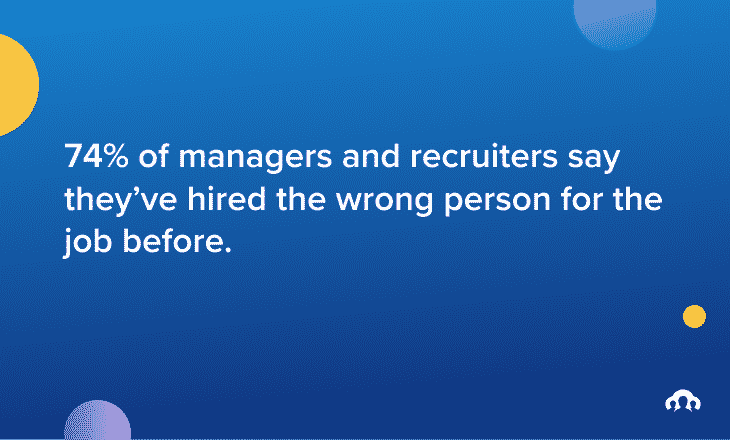
- 74% of managers and recruiters say they’ve hired the wrong person for a job,
- 75% of the need for new employees comes from people leaving, making attrition one of the costliest HR factors.
- Companies lose, on average, $14,900 USD for every bad hire (not including the salary given to unproductive employees).
This is where data-driven recruiting can pick up the slack and provide insight into who your best candidates really are, where they come from, and how much they should cost.
What is data-driven recruitment?
Data-driven recruitment is a data-driven approach to hiring uses technologies, techniques, and data to analyze a large talent pool and identify candidates with the right skills, experience, and mindset to help the organization achieve its goals. Recruiters will take a large talent pool, analyze it using a variety of technologies, and narrow it down until only the best candidate remains.
As this process is repeated, more and more data become available to recruiters. Over time, as your system analyzes the data, new insights into metrics like efficiency, cost, and quality will become available for you to use.
This type of intelligent recruitment is a relatively new phenomenon and is the direct result of new and exciting HR technologies becoming common staples in the workforce. Technologies like an Applicant Tracking System (ATS), HRIS or performance management platforms, to name a few, all contribute in some way to this massive collection and analysis of recruitment data.
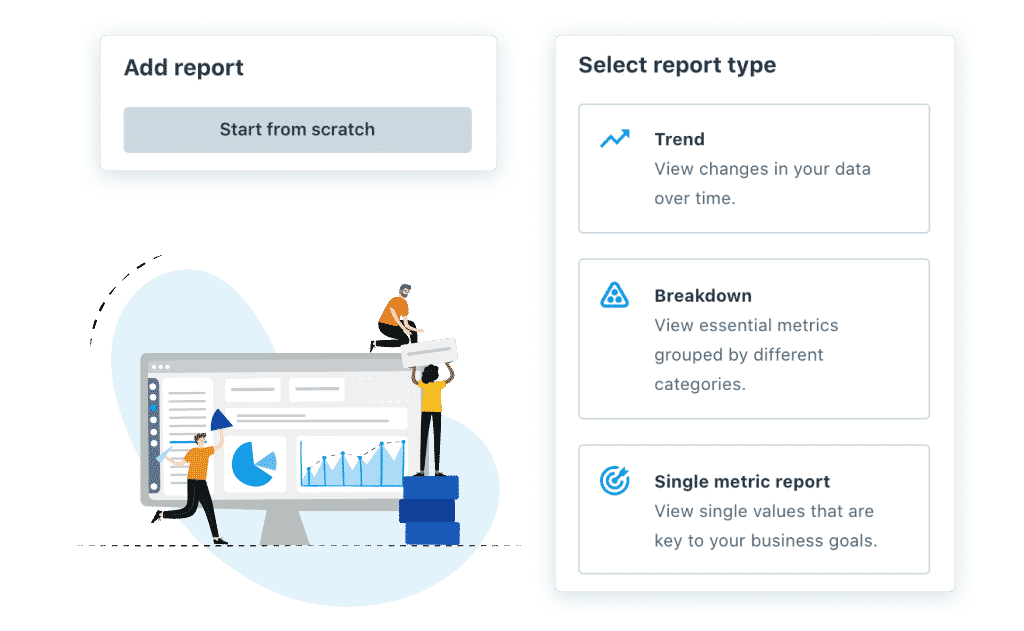
Data-driven recruitment, as a whole, has the audacious goal of redefining hiring. It aims to use all of the data available to a recruiter – not just resumes or cover letters – to make the right decision. This includes collecting and analyzing candidate data from a variety of sources, including social media activity, past jobs, online publications, etc. and factoring it in alongside traditional data. It also entails analyzing the data at a recruiter’s disposal in their own HR systems, finding efficiencies and trends and potentially overhauling the entire recruitment process to implement improvements.
Like any great new frontier, data-driven recruiting can be a daunting technique to adopt. Luckily, there are plenty of proven benefits that will help motivate you to get started.
The 5 benefits of data-driven recruitment
Like any work initiative, the benefits of hiring using a data-driven approach will vary depending on the effort and skills put into it.
If you’re dedicated to learning about your recruitment process and open-minded enough to let an objective approach take over, then there are some serious benefits that you and your company could reap from overhauling your traditional techniques.
While results may vary, here are some of the most common benefits associated with data-driven recruiting:
1. Stop making decisions “from the gut”
Most recruiters have been there. A choice between two (or more) incredibly qualified candidates with seemingly nothing to distinguish which one is the better choice for the job. In such situations, it not uncommon for some emotion or bias to creep into the equation and prompt the recruiter to make a decision “from the gut.”
In these situations, data-driven hiring can help make this decision for you by showing variables that you may not have seen. Perhaps there is some nugget of information hidden in one of your candidates’ work history that pushes him or her to the front (or back). Or, perhaps one of your candidates has some of the same “intangibles” that make a number of your top performers so effective.
By collecting and analyzing this type of data, you’re giving yourself a much more holistic view of each hiring situation, allowing you to be objective in your decision-making.
2. Improve the quality of hire
Making more informed and objective decisions based on data and recruitment analytics on who to hire can have the very important benefit of improving the overall quality of your work. That’s the same for virtually any industry.
Take the time to analyze your data to gain a full understanding of what makes your best hires tick. Who are they? Where did they come from? What are some common qualities they all share?Analyze the variables that are consistent with your best hires, and focus on those going forward.
Relevant: 3 hidden problems ruining your quality of hire
3. Decrease hiring costs
If you’re focussing only on the variables that lead to the best hires and eliminating as much waste or churn as possible, then you should also start to see the overall cost of hiring decrease.
That’s because you’re essentially trimming the fat on your traditional hiring process. For example, identifying the platforms that you spend a lot of time and money advertising on, but which offer little to no tangible results, makes it much easier to cut this program altogether.
This could save you lots of money, which in turn can be folded into more successful recruitment endeavors.
Looking to understand the cost of a bad hire? Use our calculator to find out more.
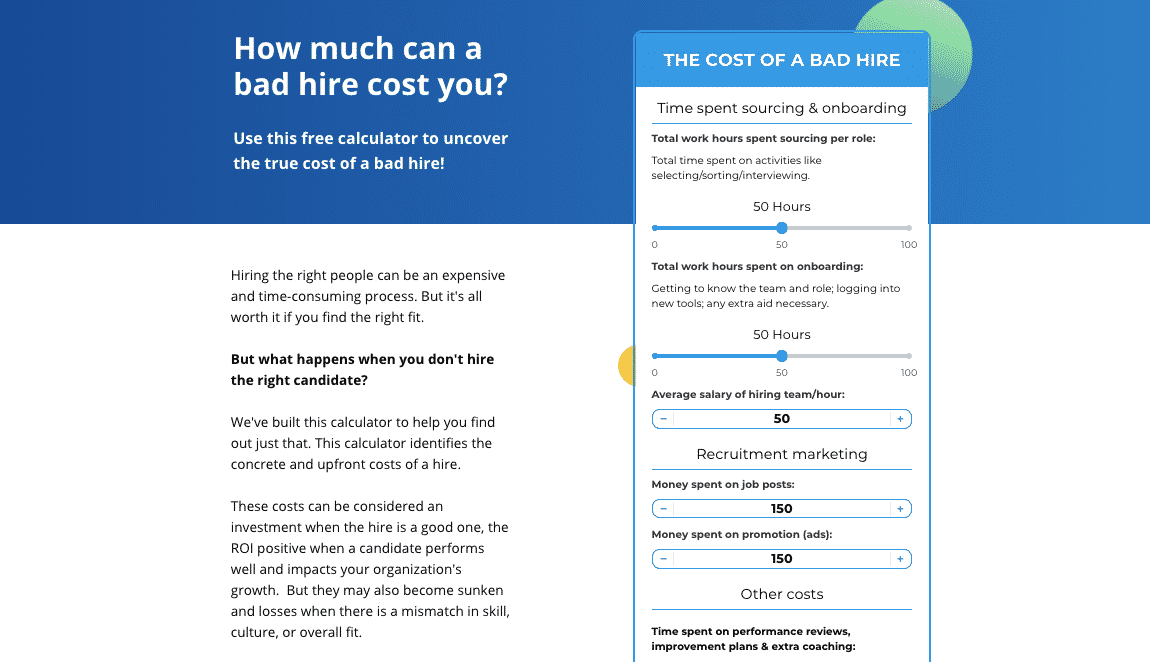
4. Improve the candidate experience
Analyzing and experimenting with different ways to improve the quality of your recruitment process can also have the added benefit of improving your overall candidate experience.
Think about it. If the metrics around your application process imply that candidates are repeatedly dropping off at the same point, then there’s probably a good reason for it. That reason is likely that this step is annoying, redundant or too intensive for most candidates to complete.
By identifying these data points, you can remove the roadblocks that could be stopping top tier candidates from completing the application process. As a result, you begin to evolve and refine your candidate experience into one that is desirable for your target candidates.
5. Improve vacancy and hiring forecasts
Lastly, the more time you spend analyzing your recruitment data, the easier it becomes to identify patterns and trends that suggest future situations.
Understanding the ebbs and flows of your company’s recruitment and HR environment will help with forecasting potential vacancies and the associated hiring and labor costs associated with filling them. You can track things like turnover rate annually and common times of year when people are leaving your company.
These pieces of data can prove invaluable for preparing your recruitment team and communicating funding requirements to upper management.
What recruitment data should I measure, and how?
As you can probably imagine, there’s a huge variety of recruitment data you can use to inform your hiring. This includes anything from recruitment channels to time-based metrics to cost. Knowing which key performance indicators are most relevant to your recruitment process is the first step in developing a new data-driven hiring policy.
To get you thinking, here is a list of common recruitment KPIs:
- Speed-based recruitment metrics like time to hire, time to acceptance, time to start, time to approve, and time per stage.
- Quality-based recruitment metrics like submission to acceptance rate, source of hire, applications per job, candidates per hire and retention rates.
- Cost-based recruitment metrics like cost per hire, applications per channel, talent pool growth and advertisement performance.
It’s important to not get bogged down with the volume of KPIs and data that is available to you in your HR systems. Sit down with your team and management to discuss your overall goals, and come up with a list of KPIs that are most relevant to where you want to be.
If your goal is to reduce costs, focus on cost-based recruitment metrics and optimize your hiring strategy around improving efficiencies. If you want to improve the overall quality of your hires, then take a deep dive into what your metrics are saying around the hiring funnel, employee engagement, and retention.

Let’s look at an example.
Company A wants to speed up their hiring process
Company A has heard many complaints over the years from candidates that their hiring process takes too long. There are too many interviews, lots of silence between communications and a decline in candidate interest over time. They’ve begun to notice that fewer applicants are applying and chatter online about poor candidate experience.
To salvage their reputation as a great employer, Company A wants to find ways that they can speed up and simplify their recruitment process. They want to retain a high level of quality in their hires, and so need to find a way to speed up the process without jeopardizing the end result.
Company A, therefore, would want to take a hard look at their speed-based recruitment metrics, as well as take stock of all of the touch points between application and hire. How long does it take a candidate to go through the entire hiring process? What’s the wait time between phases? How many touch points are there, and how long do they take?
By analyzing these metrics and taking an honest look at their process, Company A should be able to identify any unnecessary hiring delays that are leading to disillusioned candidates. Are there too many interviews, and do they take up too much time? Or, is the recruitment team simply understaffed and not able to contact candidates frequently enough?
By figuring out what the original problem is (speed) and identifying the end goal (better candidate experience), Company A is able to identify which recruitment metrics will provide the best insights into their problem. Then, assuming the company has an HR tech platform to collect and analyze recruitment data (spoiler: they do) Company A is able to harness technology to find a solution to their problem and implement it with confidence.
Can you imagine how long this process would take the old-fashioned way?
Tools for data-driven recruitment
The tools you need to implement a fully data-driven approach to hiring will likely depend on the size of your company and your annual hiring needs.
Large, enterprise-scale companies may opt for multiple HR systems and databases to process the sheer scale of data being created by sourcing and analyzing new hires. Of course, the more systems you have, the harder it is for them to communicate with one another. This can often result in recruitment data silos and a lack of coherence into how to use the information stored in multiple locations. Recruiters can, therefore, lack the holistic view of their processes needed to truly optimize and innovate their techniques.
A more suitable approach, then, could be to source and implement a single tool to collect and process all of your data, like Recruitee:
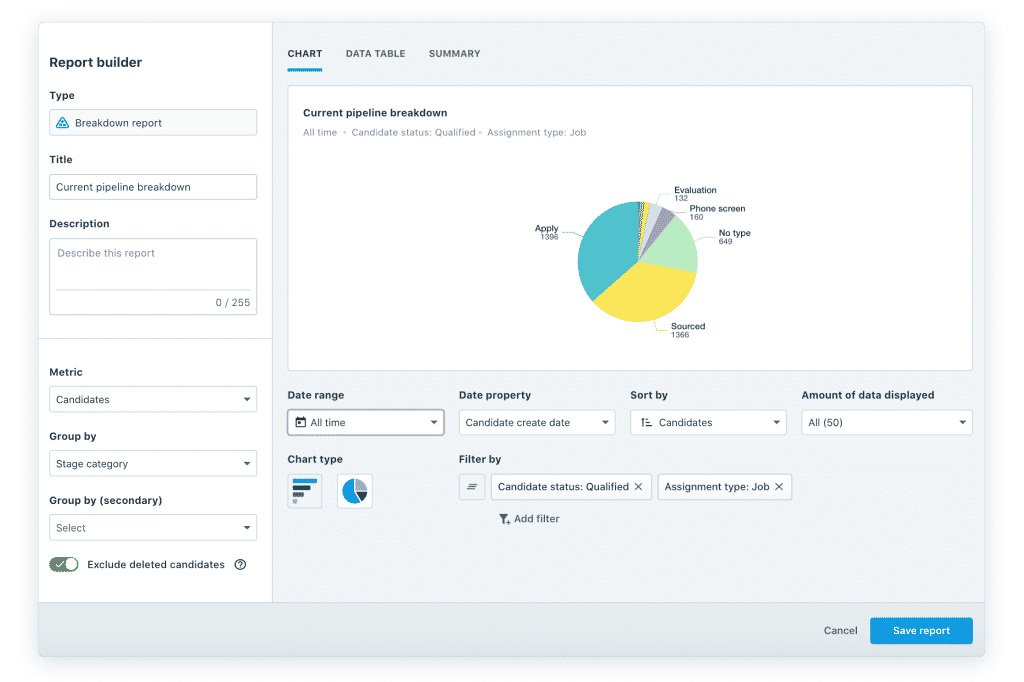
A single-system approach is beneficial because it puts all of your data in one place. Recruitee, for example, offers a full, turn-key approach to recruitment analytics. This includes:
- Tracking data and trends from different job postings to help make continuous improvements
- Analyzing your recruitment channels to find where the best talent is coming from
- Monitoring team performance
- Providing a full range of custom recruitment metrics
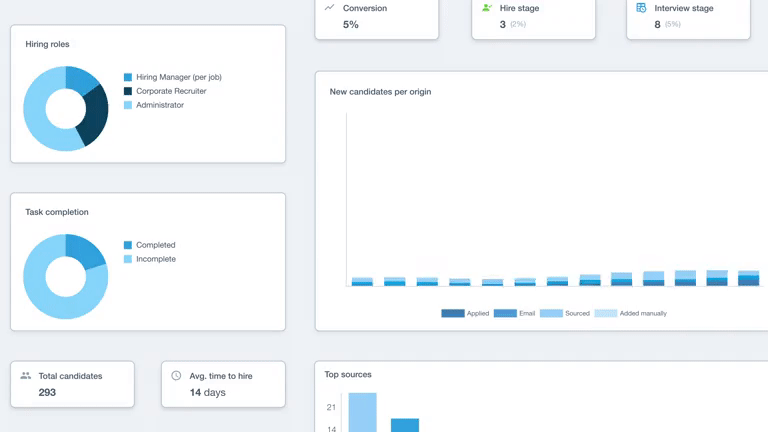
Bottom line
Whichever tool you choose, it’s important to have a clear understanding of your goals and abilities as a recruitment team.
Take an honest look at what you’re hoping to accomplish, research a variety of tools and options for recruitment analytics, and make an informed decision of what option will work best for your company. That’s the spirit of data-driven recruitment!








